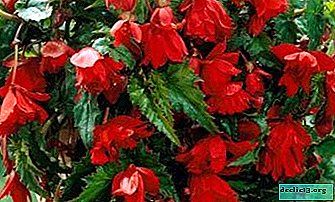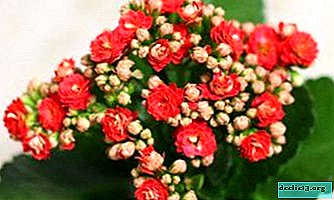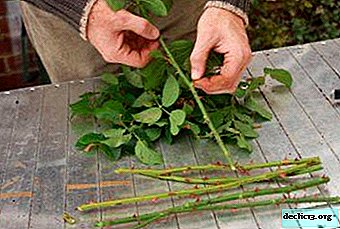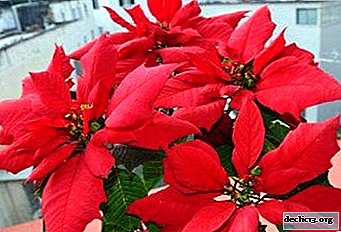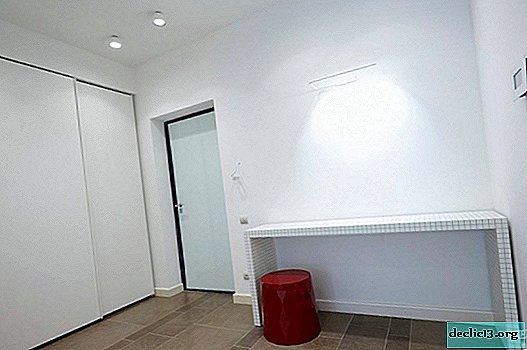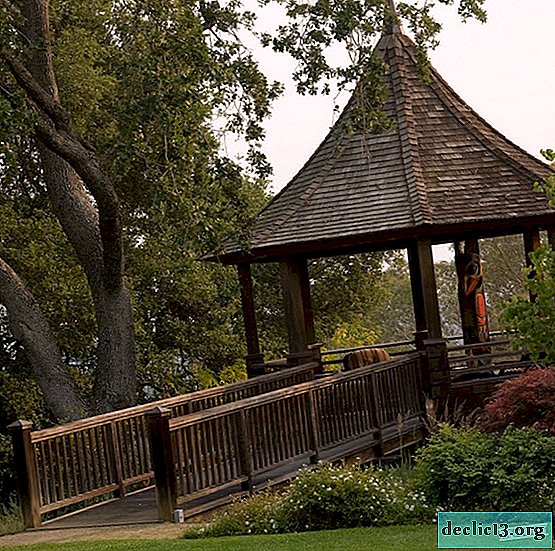Beautiful Decembrist: rules for caring for a flower at home

Schlumberger flower belongs to the genus of forest epiphytic plants. The natural habitat is Brazil. It grows well in tropical forests, on stumps and tree trunks. In a temperate climate, he feels no less comfortable. It is also one of the few plants that bloom in winter. Its flowering falls on December-January, hence the name “Decembrist” or “Christmas poinsettia” came from, if you know how to care for it.
From the article you will learn how to care for a flower so that it blooms when transplanting a schlumbergera cactus, so that the color is plentiful and how to water it in autumn and winter. We will tell you what he loves and how he behaves after flowering.
How to care for a houseplant: instructions
In the tropics, the flower has to grow in poor soil, with high humidity and lack of light. But sudden changes in temperature are not familiar to him. For successful development in room conditions, the Decembrist needs to create the most pleasant parameters, close to natural.
Lighting
 Zigocactus does not like bright light. It must be shaded from the sun. The correct light mode is a guarantee of abundant flowering of the Decembrist. But more about that below.
Zigocactus does not like bright light. It must be shaded from the sun. The correct light mode is a guarantee of abundant flowering of the Decembrist. But more about that below.
These plants require diffused light. Ultraviolet light can hurt. It is not recommended to leave the flower on the windowsill in the sultry daytime hours. Rozhdestvennik, of course, will not perish, but the stems will turn red.
Under the influence of intense light, growth slows down, chlorosis may develop. Decembrist grows well in artificial lighting.
Temperature
Comfortable temperature for Christmas + 18-24 ° С. Such parameters should be maintained throughout the year. The flower is able to tolerate even higher temperatures up to + 30 ° C, only abundant watering and high humidity are needed. In the cold season there should not be strong temperature differences. A short-term change in temperature indicators up to + 5 ° C is tolerated.
Note. The temperature should not be lower than + 13 ° C.A place
But the question: “Is it possible to keep Schlumberger in the bedroom?”, The answer is “Definitely yes.” The plant is not poisonous. On the contrary, it absorbs carbon dioxide, filling the room with oxygen. The flower absorbs dust and microwaves emitted from household appliances. Zygocactus looks beautiful on a bedside table or in a pot hangingas an ampel view. According to the advice of experts, it is preferable to choose windows for it from the north side, light partial shade is what you need. If this is not possible, then bright rays should preferably be shaded with a tulle curtain.
Humidity
In summer, the preferred humidity is 50-70%. Water procedures will also be useful: spraying, warm shower.
It is important that water does not fall on the flowers, or that water drops must be wiped off immediately, otherwise dark spots will remain. Room humidity maintained with a humidifier or a special fountain with water, also open containers filled with liquid are placed near the pot. In winter, do not leave a flower near heating appliances.
Watering
 Despite the fact that the Decembrist belongs to the Cactus family, this does not mean that it does not need to be watered. Humidify the flower should be regular, especially during flowering. Do not allow the complete drying out of the earthen coma in the pot.
Despite the fact that the Decembrist belongs to the Cactus family, this does not mean that it does not need to be watered. Humidify the flower should be regular, especially during flowering. Do not allow the complete drying out of the earthen coma in the pot.
And after flowering, from February to April - reduce the volume of water. In summer and autumn, the Decembrist is moistened, only after the topsoil in the pot has dried. The water used for procedures is soft, settled, preferably without impurities and salts.
Read how to properly water the “Christmas Cactus” so that it blooms magnificently and is healthy, read in our material.
The soil
A suitable substrate for a tropical guest should have a slightly acid reaction, have friability, lightness. No less important are such qualities: breathability and moisture resistance. The composition of the soil mixture must include: peat, coarse sand, deciduous earth, natural baking powder.
Top dressing
Zygocactus can develop perfectly without any nutrition. In principle, he has enough nutrients in the soil. But sometimes they still use additional nutrition to improve growth and more luxuriant flowering. The most suitable fertilizers are mineral preparations based on nitrogen, potassium and phosphorus.
Important. Stop fertilizing the soil a month before the start of the budding process.You can find out what to feed and how to care for the Decembrist so that it blooms here.
How to care for a white Christmas?
Caring for a white Decembrist depends on the changing seasons. Throughout the year, the plant has four periods.
- Vegetation. It lasts from March to September. At this time, the plant begins to grow actively, young shoots appear. With the arrival of heat, the Decembrist, if possible, is taken out to the street or to the balcony. Having covered it from the day sun, in partial shade. Water moderately 1-2 times a week. The ideal temperature for the plant during the growing season is + 20-23 ° C. Fertilizing is predominantly nitrogen, for the full development of green mass. It is enough to fertilize the flower 1 time in 10-14 days.
- Bloom preparation. It starts from the end of September and lasts until November. If the white Christmas tree is on the street, then before the onset of frost it is not necessary to bring it into the house. For autumn, the content parameters are + 10-17 ° С. Watering to minimize. This time is considered a resting period for the plant. And he should rest in a cool, well-ventilated area.
- Bloom. At the end of November, the plant should be watered abundantly every 2-3 days. Do not forget to feed potash and phosphorus fertilizers. For the formation of buds it will not be superfluous to maintain a temperature of + 18-22 ° C during the day and + 16-20 ° C at night. Thanks to the correct content parameters, the Christmas tree will be covered with beautiful white inflorescences.
- Second period of rest. After flowering, zygocactus should gain strength for further growth. Just from February to March, they transplant and form a crown. Water a little.
Zygocactus Photo
Next you will see a photo of the Decembrist:



What to do during flowering?
As already mentioned, the Schlumberberg blooms in December and lasts about two months. Each inflorescence pleases with its beauty for about 4-5 days. And because of their huge amount, the flowering period increases. During flowering plants need:
- intense artificial lighting;
- heavy drinking;
- temperature + 18-22 ° С;
- top dressing for flowering plants once every two weeks;
- no need to wash, spray, move or touch it at all.
Methods of breeding Schlumbergera
At home, bred Decembrist in such ways:
- seed;
- cuttings;
- division.
Seeds give a good germination, but it will not be uniform in time. Inexperienced flower growers after sprouting the first part of the seedlings stop moistening the soil, thinking that the remaining seeds will not sprout. And in vain. Watering further, all seedlings will grow. The cuttings or joints are nibbled off, and after 3 days they are placed on a substrate (how to plant a Decembrist by the appendix and in other ways, read here). The formation of roots occurs in greenhouse conditions. The methods of division and cuttings of the Decembrist are more common, since the processes take root quickly and without any problems.
Transfer
 The soil is renewed for a young individual up to 3 years old every year, in the spring. Adult plants need a change of soil and pot no more than 1 time in 3-4 years. The Decembrist is planted in a high-quality ready-made substrate for cacti or made with his own hands.
The soil is renewed for a young individual up to 3 years old every year, in the spring. Adult plants need a change of soil and pot no more than 1 time in 3-4 years. The Decembrist is planted in a high-quality ready-made substrate for cacti or made with his own hands.
The latter is performed by mixing the main components of the mixture in equal proportions. A claydite layer 2-3 cm thick is always laid on one. Drainage removes excess fluid from the pot, which helps to avoid overmoistening the soil.
The pot is preferably not deep but wide. Transplanting is an important and necessary procedure that stimulates the further growth of the Christmas tree, as well as contributes to long-term flowering.
Important. Landing during flowering is strictly prohibited.You can find out how to properly transplant Decembrist at home here.
Pruning
Schlumberger is not literally pruned. Segments are plucked apart by hands, without tools. The procedure is carried out immediately after flowering. The formation of the crown is done by the flower owners at their own discretion, depending on the desired shape of the plant. It is worth noting that plucking activates branching, and also favorably affects further flowering, because buds are laid on young areas of shoots.
About whether it is possible to trim the Decembrist and how to do it at home, you can find here.
Content difficulties
Decembrist is a strong exotic flower that stably tolerates diseases. It can be said that it is practically not affected by infections, except late blight, phytium and fusarium. However, health problems may occur due to improper care.
| Symptoms | Causes | Help |
| Blushed segments | Hypothermia | At temperatures below + 5 ° C, the flower changes color. It should be brought into a warm room, the green color will be restored. |
| Shriveled leaf segments | Waterlogging | Remove the plant from the pot. Trim the rotten parts of the roots. Transplant. Correct the irrigation system. |
| Lack of fluid | To water. After 24 hours, the plant will restore its turgor. | |
| Buds fade and fall away | Lack of lighting | Move the flower to a well-lit place. Do not move during flowering. |
| Long no flowering | Cold air in the room | Create favorable temperature parameters. |
| Little light | Use additional lighting. | |
| Spot spotting red, yellow | Spider mite | To process a flower with Neoron solutions; "Actellik"; "Akarin." |
| White lumps on a flower | Mealybug | Spray with an insecticide solution. |
Perhaps in spring and summer, the Decembrist bush looks unattractive. But in winter you can’t recognize him, he is completely transformed. An abundance of bright, unusual flowers decorate the house, bringing warmth and joy., regardless of the weather outside the window. At the same time, it is quite simple for the Schlumberger to look after a flowering plant, if you follow the rules described immediately after purchase. One has only to listen to the advice of experienced gardeners.



